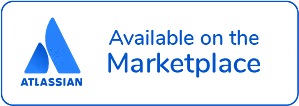Market size and Growth for Compliance and Audit
The majority of organizations nowadays place a strong emphasis on their brand value and reliable client relationships. Companies are forced to consider security measures and their solutions as a result, which include ISO 27001 accreditation or the SOC 2 framework. Due to these reasons, corporate behavior is affected globally.
What is eGCR?
The three components of the eGRC (governance, risk and compliance) previously existed as separate areas and eventually became one because they are interrelated in content.
Future of Global Compliance and Audit Market from 2021 to 2028
The global enterprise governance, risk, and compliance (eGRC) software market was valued at $31.5 billion in 2019, expanding at a Compound annual growth rate (CAGR) of 10.3%, according to Markets and Markets.
Grand View Research further asserts that a CAGR of 10.9% is predicted for the worldwide eGRC market, which is anticipated to increase from $36.1 billion in 2021 to $60.7 billion by 2026. The global eGRC market is anticipated to reach $97.3 billion by 2028.
Therefore, it is anticipated that the necessity to comply with multiple government rules and the increasingly complicated regulatory environment would continue to fuel demand for eGRC solutions.
The market for enterprise governance, risk, and compliance (eGRC) software was valued at $31.5 billion globally in 2019 and grew at a CAGR of 10.3%, according to Market and Markets. The largest market share, at over 30%, belonged to the North American region. We used that information to determine the market size of enterprise governance, risk, and compliance software in North America, which came to $9.45 billion.
With Unicis, you can manage tasks for security, privacy, and compliance team in one place.
Collaborate across multiple teams on gap analysis, procedure registers, transfer impact assessments, risk management, and AI assistance.
Get compliant in weeks, not months.
Factors driving the growth of the Global Compliance and Audit Market
The need to prevent the reputational risk of non-compliance and to control the complexity of the compliance, regulatory, and risk management environment in companies are two major factors propelling the expansion of the eGRC market.
A need for exceptional governance, risk, and compliance management demands is anticipated as a result of factors such shifting business circumstances brought on by the Covid 19 epidemic, security concerns with developing IoT and AI technology, and external reporting requirements. The demand for eGRC is still being driven by the growing volume of digital data, the associated need for constant monitoring and analytics to maintain data security and privacy, and rules imposed by various regulatory agencies.
Over 500 proceedings have been launched against non-compliant businesses to date, and fines totaling over €260 million have been imposed. Fortune 500 corporations are expected to spend over $8 billion annually on GDPR compliance.
More than a hundred jurisdictions—countries, states, and cities—are now passing their own data privacy laws. These "local GDPRs" will add up to a global web of legal requirements that will interfere with the operations of almost any international business that interacts with consumers. It is comparable to a second set of tax laws, with similar high costs, high risks, difficult implementation, and no room for complete non-compliance.
Market size of ISO 27001 vs SOC 2 audit framework
Pre-seed and seed-stage startups with less than $1 million in investment have a difficult time achieving SOC 2 compliance; just roughly 7% of them do.
However, SOC 2 compliance is present in roughly 45% of the businesses with $100 million or more in investment.
Only 18% of SaaS organizations have obtained SOC 2 or ISO 27001 certification, with 13% having both.
Why you need Unicis
Nowadays the GRC and eGRC tools are inefficient because they require a lot of manual work or integration with other tools. That being said, it is hard to make the right decision, and also very expensive. For this reason, we came up with Unicis idea to provide the startups this gap and possibility to solve that problem and raise the revenue significantly based on a certain percent of time each day spent on managing multiple GRC tools.
